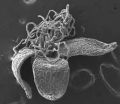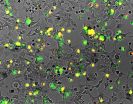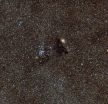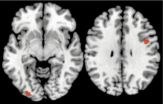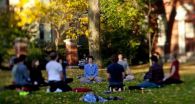(Press-News.org) Researchers have shown that part of Australia's rich plant diversity was wiped out by the ice ages, proving that extinction, instead of evolution, influences biodiversity.
The research led by the University of Melbourne and University of Tasmania has shown that plant diversity in South East Australia was as rich as some of the most diverse places in the world, and that most of these species went extinct during the ice ages, probably about one million years ago.
The team's work was published in the prestigious journal Proceedings of the National Academy of Sciences.
Dr Kale Sniderman of the University of Melbourne's School of Earth Sciences said the findings show extinction is just as important to diversity of organisms as evolution.
"Traditionally scientists believed some places have more species than others because species evolved more rapidly in these places. We have overthrown this theory, which emphasizes evolution, by showing that extinction may be more important, " he said.
The study compared two regions of Southern Australia and South Africa.
"South-western Australia has a huge diversity of tough-leaved shrubs and trees such as eucalypts, Banksia, Grevilleas and Acacias, making it one of the most biodiverse places on earth," Dr Sniderman said.
"The southern tip of South Africa is even richer, with astonishing numbers of similar kinds of plants like proteas and ericas."
Scientists have long maintained that this diversity is somehow related to the poor soils and dry summers of these places.
For the study researchers analysed plant fossils that accumulated in an ancient lake in South Eastern Australia. They found the region had at least as many tough-leaved plants 1.5 million years ago as Western Australia and South Africa do today.
The results were entirely unexpected.
"As Australia dried out over the past several million years, rainforest plants largely disappeared from most of the continent," said Dr Sniderman
"It has been thought that this drying trend allowed Australia's characteristic tough-leaved plants to expand and became more diverse. We have shown that the climate variability of the ice ages not only drove rainforest plants to extinction but also a remarkable number of tough-leaved, shrubby plants," he said.
Dr Greg Jordan of the School of Plant Sciences at the University of Tasmanian said not only has the study overturned current thought on the role of extinction in plant diversity, it has implications for understanding how Australian plant diversity will deal with current and future climate change.
"The species that went extinct in SE Australia during the ice ages were likely to be the ones most sensitive to rapid climate change, meaning that the species that now grow in eastern Australia may be more capable of tolerating rapid changes than predicted by current science," he said.
"However, the species in hotspots of diversity like Western Australia may be much more sensitive to future climate change, because they have been protected from past climate changes."
INFORMATION:
The study was done in collaboration with the Nelson Mandela Metropolitan University in South Africa.
Ice age extinction shaped Australian plant diversity
2013-02-13
ELSE PRESS RELEASES FROM THIS DATE:
Flood research shows human habits die hard
2013-02-13
New research has come up with ways to quickly assess flood damage to houses while also showing most people didn't intend to make changes to reduce their vulnerability after the 2010-11 floods in Australia.
Two separate reports from the National Climate Change Adaptation Research Facility released today show how lessons learned from households affected by the 2010-11 Australian floods can minimise damage under current and future climates.
The report Analysis of Damage to Buildings Following the 2010 Eastern Australia Floods evaluated the role of development controls ...
Blackbirds in the spotlight
2013-02-13
This press release is available in German.
Street lamps, traffic lights and lighting from homes are causing a rise in our night-time light levels. For some time now, scientists have suspected that artificial light in our towns and cities at night could affect plants, animals and us, humans, too. Studies, however, that have tested this influence directly are few. Scientists from the Max Planck Institute for Ornithology in Radolfzell, Germany, recently investigated how light conditions in urban areas at night affect European blackbirds (Turdus merula). They found that animals ...
Copper depletion therapy keeps high-risk triple-negative breast cancer at bay
2013-02-13
NEW YORK (February 13, 2013) -- An anti-copper drug compound that disables the ability of bone marrow cells from setting up a "home" in organs to receive and nurture migrating cancer tumor cells has shown surprising benefit in one of the most difficult-to-treat forms of cancer -- high-risk triple-negative breast cancer.
The median survival for metastatic triple-negative breast cancer patients is historically nine months. However, results of a new phase II clinical trial conducted by researchers at Weill Cornell Medical College and reported in the Annals of Oncology shows ...
UNC researchers discover gene that suppresses herpesviruses
2013-02-13
Chapel Hill, NC – Kaposi's sarcoma-associated herpesvirus (KSHV) and Epstein-Barr virus (EBV) hide within the worldwide human population. While dormant in the vast majority of those infected, these active herpesviruses can develop into several forms of cancer. In an effort to understand and eventually develop treatments for these viruses, researchers at the University of North Carolina have identified a family of human genes known as Tousled-like kinases (TLKs) that play a key role in the suppression and activation of these viruses.
In a paper published by Cell Host ...
'A drop of ink on the luminous sky'
2013-02-13
This part of the constellation of Sagittarius (The Archer) is one of the richest star fields in the whole sky -- the Large Sagittarius Star Cloud. The huge number of stars that light up this region dramatically emphasise the blackness of dark clouds like Barnard 86, which appears at the centre of this new picture from the Wide Field Imager, an instrument mounted on the MPG/ESO 2.2-metre telescope at ESO's La Silla Observatory in Chile.
This object, a small, isolated dark nebula known as a Bok globule [1], was described as "a drop of ink on the luminous sky" by its discoverer ...
Study suggests infant deaths can be prevented
2013-02-13
(TORONTO, Canada – Feb. 13, 2013) – An international team of tropical medicine researchers have discovered a potential method for preventing low birth weight in babies born to pregnant women who are exposed to malaria. Low birth weight is the leading cause of infant death globally.
The findings of Malaria Impairs Placental Vascular Development, published today online ahead of print in Cell Host & Microbe, showed that the protein C5a and its receptor, C5aR, seem to control the blood vessel development in the mother's placenta. Without adequate blood vessels in the placenta, ...
Carnegie Mellon brain imaging research shows how unconscious processing improves decision-making
2013-02-13
PITTSBURGH—When faced with a difficult decision, it is often suggested to "sleep on it" or take a break from thinking about the decision in order to gain clarity.
But new brain imaging research from Carnegie Mellon University, published in the journal "Social Cognitive and Affective Neuroscience," finds that the brain regions responsible for making decisions continue to be active even when the conscious brain is distracted with a different task. The research provides some of the first evidence showing how the brain unconsciously processes decision information in ways ...
Study in mice yields Angelman advance
2013-02-13
PROVIDENCE, R.I. [Brown University] — In a new study in mice, a scientific collaboration centered at Brown University lays out in unprecedented detail a neurological signaling breakdown in Angelman syndrome, a disorder that affects thousands of children each year, characterized by developmental delay, seizures, and other problems. With the new understanding, the team demonstrated how a synthesized, peptide-like compound called CN2097 works to restore neural functions impaired by the disease.
"I think we are really beginning to understand what's going wrong. That's what's ...
A neural basis for benefits of meditation
2013-02-13
PROVIDENCE, R.I. [Brown University] — Why does training in mindfulness meditation help patients manage chronic pain and depression? In a newly published neurophysiological review, Brown University scientists propose that mindfulness practitioners gain enhanced control over sensory cortical alpha rhythms that help regulate how the brain processes and filters sensations, including pain, and memories such as depressive cognitions.
The proposal, based on published experimental results and a validated computer simulation of neural networks, derives its mechanistic framework ...
Wetland trees a significant overlooked source of methane, study finds
2013-02-13
Wetlands are a well-established and prolific source of atmospheric methane. Yet despite an abundance of seething swamps and flooded forests in the tropics, ground-based measurements of methane have fallen well short of the quantities detected in tropical air by satellites.
In 2011, Sunitha Pangala, a PhD student at The Open University, who is co-supervised by University of Bristol researcher Dr Ed Hornibrook, spent several weeks in a forested peat swamp in Borneo with colleague Sam Moore, assessing whether soil methane might be escaping to the atmosphere by an alternative ...
